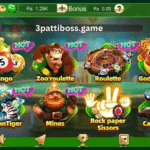Preparing for a trade show involves much more than reserving a booth and showing up. To truly maximize your return on investment, you need a well-structured plan that covers every phase—from strategy and booth design to staff training and post-show follow-up.
This comprehensive trade show checklist will guide you step-by-step through the process to help ensure a smooth execution and meaningful results.
Phase 1: 3–6 Months Before the Show
Set Clear Goals
Begin with a strategic foundation. What are you hoping to achieve?
- Lead generation
- Product or service launch
- Brand visibility
- Strategic partnerships
- Sales meetings or demos
Establishing specific, measurable goals allows you to align your booth design, staffing, and marketing strategies accordingly.
Choose the Right Exhibit Type
Depending on your frequency of participation and branding needs, decide which type of booth best fits your objectives:
- Custom exhibits for long-term use and maximum brand impact
- Rental exhibits for short-term flexibility and lower upfront costs
- Modular or hybrid booths that combine branded and reusable components
Working with an experienced exhibit design partner can help you identify the most cost-effective and strategic solution.
Reserve Booth Space
Register as early as possible to secure a prime location. Consider factors such as traffic flow, visibility, and proximity to competitors or major attractions.
Create a Realistic Budget
Include all the major (and hidden) costs:
- Booth design and production
- Shipping, logistics, and storage
- Show services (electricity, internet, rigging)
- Travel and lodging for staff
- Marketing and promotional materials
- Lead capture tools and software
It’s wise to include a contingency fund for unexpected expenses.
Phase 2: 1–2 Months Before the Show
Finalize Booth Design and Graphics
Confirm that your booth:
- Clearly communicates your brand message
- Supports your goals (product demos, meetings, or lead generation)
- Meets all show regulations and technical requirements
Complete production of graphics, signage, flooring, furniture, and AV elements with time to spare.
Launch Pre-Show Marketing
Don’t wait until the event to attract attention. Promote your booth in advance:
- Email invitations to current clients and prospects
- Announce your booth location on social media
- Schedule meetings with key contacts ahead of time
- Utilize the event’s promotional opportunities, such as online directories or sponsorships
Make it easy for attendees to find—and prioritize—your booth.
Order Promotional Materials and Giveaways
Print collateral and choose giveaways that support your brand positioning:
- Product brochures or flyers
- Branded merchandise
- Digital content (via QR codes or USBs)
- Business cards for all booth staff
Ensure everything arrives well before the event date.
Train Your Booth Staff
Your team is a critical part of the exhibit’s success. Make sure they are:
- Aligned with the company’s key messages
- Well-versed in the product or service being showcased
- Trained in engaging attendees, qualifying leads, and using lead capture tools
- Prepared to handle logistical questions and on-site troubleshooting
Role-playing real booth scenarios can help your team feel more confident and consistent.
Phase 3: 1–2 Weeks Before the Show
Confirm Logistics and Shipping
Double-check the following:
- Shipping dates and delivery confirmation for booth components
- Installation and dismantle schedule
- Labor and services ordered through the show organizer
- Hotel and travel arrangements for your team
Have all necessary documentation organized in both digital and hard copy form for easy reference on-site.
Test Equipment and Tech
Ensure that:
- All AV equipment, screens, and demo tools are functioning
- Tablets or devices are loaded with the correct apps or presentation materials
- Internet connections are accounted for (wired or wireless)
- Backups and charging stations are available
Technical failures on the floor can cost valuable opportunities.
Phase 4: During the Show
Stay On Message and On Brand
Ensure booth staff maintains a professional, welcoming appearance throughout the show. Your exhibit should remain clean, organized, and aligned with your messaging.
Capture and Qualify Leads
Use lead retrieval tools to collect contact information, qualify leads, and make notes on conversations while they’re fresh. Consider assigning one team member to manage and review leads at the end of each day.
Engage and Observe
Pay attention to:
- Traffic patterns and visitor behavior
- Engagement at interactive elements or product demos
- Competitor activity nearby
- Social media mentions and brand hashtags
Use this information to adapt on the fly or improve future event strategy.
Phase 5: Post-Show Follow-Up (Within 1 Week)
Follow Up Promptly
Send personalized follow-up messages as soon as possible. Tailor outreach based on the type of lead:
- Hot leads: Schedule a follow-up call or meeting
- Warm leads: Share product information or case studies
- General inquiries: Add to a drip campaign or newsletter list
The faster the follow-up, the higher the chance of conversion.
Debrief with Your Team
Hold a review meeting to evaluate:
- What went well
- What could be improved
- Feedback from attendees and staff
- Suggestions for future booth design or engagement strategies
Document your insights for future reference.
Analyze Performance and ROI
Compare your outcomes against your original goals:
- Total and qualified leads generated
- Meetings or deals secured
- Social media engagement
- Cost per lead or per contact
- Budget performance
Use these metrics to assess whether the trade show was a worthwhile investment—and what adjustments to make next time.
Final Thoughts
Trade show success doesn’t happen by chance—it happens by preparation. By following a structured checklist from pre-show planning to post-show analysis, you’ll ensure your brand makes a strong impression and your team gets the most value from every event.
Need help with booth design, logistics, or strategy? Working with an experienced exhibit partner can save time, reduce stress, and ensure your presence stands out in all the right ways. We recommend ExpoMarketing.





